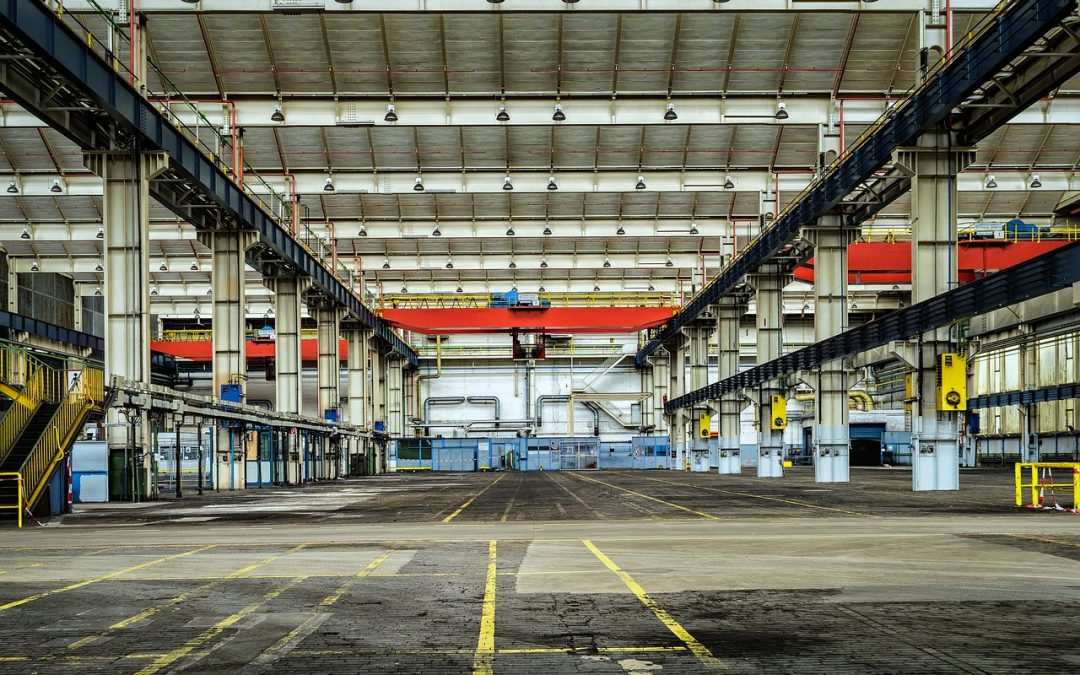
Are These the 5 Biggest Fallacies in Supply Chain Management?
Larger societal changes are affecting the way companies are planning their Supply Chains of the future. Here are the five biggest fallacies in supply chain management right now.
This guest post comes to us from Argentus Supply Chain Recruiting, a boutique recruitment firm specializing in Supply Chain Management and Procurement.
Lots of things are happening in Supply Chain Management. The field is becoming more digital, with end-to-end planning and blockchain technologies transforming the way products are coming to market. It’s becoming more strategic, as companies integrate their Supply Chains and use them as a source of competitive advantage – instead of just a back-office function. Larger societal changes are affecting the way companies are planning their Supply Chains of the future – everything from the looming arrival of driverless cars, to consumers’ demands that companies be more socially responsible.
We’ve written about quite a few of these topics ourselves. They’re exciting. They’re impactful on business. And – most relevant for us at Argentus as a recruitment company – they’re changing the talent picture by transforming the skills that Supply Chain professionals need to succeed.
[bctt tweet=”A new article in Forbes, “The Biggest Supply Chain Fallacies,” by Supply Chain researcher and beat writer Steve Banker, challenges a few of the assumptions underlying current supply chain management trends.” username=”Fronetics”]
A new article in Forbes, “The Biggest Supply Chain Fallacies,” by Supply Chain researcher and beat writer Steve Banker, challenges a few of the assumptions underlying these trends, and calls out some of the conventional wisdom that’s taken hold in the field.
We wanted to take the opportunity to discuss and respond to some of Mr. Banker’s points (because who doesn’t love a little bit of controversy?) as well as to throw it to our readers for further discussion. Whether you agree or disagree with some of Mr. Banker’s arguments, they’re thought provoking to say the least.
So here are the biggest fallacies he sees in the field right now, as well as our thoughts:
Fallacy 1: Blockchain will make everything traceable in Supply Chains, leading to greater supplier transparency.
We’ve covered Blockchain quite a bit in recent months. In short, companies are using Blockchain’s distributed ledgers to form a public record of where goods come from, allowing consumers to trace goods in the supply chain. The goal is to make the origin of goods more transparent, allowing companies to prove that goods haven’t come from workers under abuse or unsustainable sources.
Why This Might Be a Fallacy: According to Banker, Blockchain doesn’t solve the “garbage in, garbage out” problem that goes along with big data. His point: if a supplier lies about the provenance of a good at the point of origin – say, a farmer pretending beef is grass fed if it’s not – it doesn’t matter how transparent the Supply Chain is from that point forward. He says that Blockchain won’t eliminate the need for other kinds of certification in the Supply Chain, and we tend to agree – but does that mean it won’t be useful? No.
Fallacy 2: Corporate Social Responsbility initiatives improve a companies financial performance.
We’ve touched on Corporate Social Responsibility (or CSR) when discussing the annual Top 25 Supply Chains list with Gartner’s Michael Massetti. More companies are raising expectations of environmental sustainability. Some massive companies have pledged to eliminate excess waste in their supply chains entirely in the coming years, and there’s a lot of talk that sustainability helps the bottom line by improving sales and lowering costs (e.g. fuel).
Why This Might Be a Fallacy: Banker points out that companies shouldn’t assume that CSR efforts will necessarily improve sustainability. In his eyes, they’re good for society – but they have less financial benefit in business-to-business-selling industries (where customers won’t pay a premium for sustainable goods) and developing economies.
Fallacy 3: There’s a shortage of truck drivers – a threat to the Supply Chain stability – because young people don’t want to drive trucks.
The Logistics industry press has been writing a lot about a shortage of truck drivers, with a lot of anxiety about how the demographics of truck drivers are skewing older and older.
Why This Might Be a Fallacy: Banker is responding to the prevailing wisdom that says the truck driver shortage comes from millennials wanting other careers. He retorts that the median truck driver salary of $42,553 is the reason why young people don’t want to go into the field, and that the industry should raise drivers’ wages if it wants to attract applicants – instead of waiting for driverless trucks which, in Banker’s opinion, are father off than they seem. He cites data from the American Trucking Association that wages have risen between 15 and 18 percent from 2013-2017, and says this should mean that the shortage will be overblown.
Fallacy 4: Improved forecasting will always lead to lower inventory levels.
This one is a bit of a sacred cow in the world of Supply Chain analytics. Everyone knows that demand planning isn’t completely foolproof, but these forecasting solutions are improving with the advent of machine learning and other technologies.
Why This Might Be a Fallacy: Similarly to #2, Banker wants to put a bit of a pin in the hype about forecasting. He wants to challenge the assumption that better demand forecasts will always lead to lower inventory levels. In his mind – and we tend to agree – some things are still unpredictable no matter how advanced the forecasting technology. For example, if a recession hits unexpectedly, demand will be way lower than expected and you’ll likely have tons of excess inventory.
Fallacy 5: Companies who have functional excellence will always win.
Banker challenges the assumption – or “trap” as he calls it – of privileging any function’s Key Performance Indicators (KPIs) over the success of the Supply Chain ecosystem as a whole. Better reporting and data have made for an increased reliance on KPIs to maximize performance in areas like Sourcing, Logistics, Manufacturing, and Sales.
Why This Might Be a Fallacy: According to Banker, if you rely on excellence in any particular function’s KPIs, you risk hurting another function and the overall business. For example, if a company is measuring their Procurement function on price, and they source materials based on price without emphasizing quality, this can harm manufacturing will still making it look like Procurement is succeeding.
Banker argues that companies who take a more holistic approach – through processes like Integrated Business Planning (IBP) – will win over companies who prize excellence in any particular function. From our perspective, this is something most companies recognize they need to do, even if they aren’t always successful at executing it.
Whether you agree or disagree with any of Mr. Banker’s assertions, we still think it’s always valuable to question conventional wisdom and hype.
Please check out the original article, and then we want to hear from you! What do you think about any of these topics? Is Mr. Banker right, or is he barking up the wrong tree?
Related posts:
- Infographic: 5 Ways to Combat the Supply Chain Talent Gap
- 5 Ways to Combat the Supply Chain Talent Gap
- Our 6 Favorite Marketing Automation Tools for Supply Chain and Logistics Marketers


